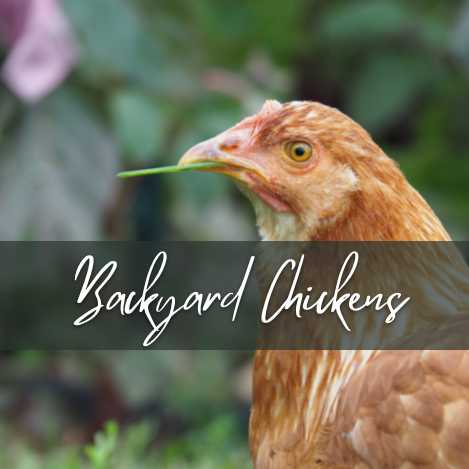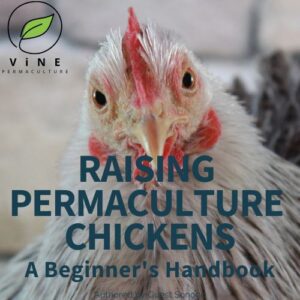In the intricate dance of permaculture, where every element serves multiple functions and nothing is wasted, chickens emerge as the unsung heroes of sustainable agriculture. Beyond their clucking melodies and vibrant plumage lies a gateway to sustainable living, profound connection with nature, and the rewarding journey of homesteading. Welcome to the world of permaculture chickens, where harmony reigns supreme and every peck serves a purpose.
At its core, permaculture is about creating sustainable, regenerative systems that mimic the patterns and relationships found in nature. Rather than imposing rigid structures and monocultures, permaculturists seek to work with the natural tendencies of the land, harnessing its inherent abundance and diversity to create thriving ecosystems that benefit both humans and the environment.

Benefits of raising permaculture chickens
There’s something serene and grounding about tending to a flock of chickens in the backyard. These charming creatures not only provide a daily dose of entertainment with their quirky personalities and antics but also contribute in myriad ways to the health, resilience, and productivity of the land. Let’s delve into the multifaceted benefits of permaculture chickens and discover why they are essential players in the quest for sustainable living.
Natural pest control
In the vibrant ecosystem of a permaculture garden, pests are kept in check through natural means, and chickens play a crucial role in this delicate balance. With their keen eyesight and voracious appetites, chickens eagerly hunt down insects, larvae, and other pests that threaten crops, eliminating the need for chemical pesticides and promoting a healthier, more biodiverse environment.
Soil fertility
Chickens are not just consumers of food; they are also prodigious producers of fertilizer. Their constant scratching and pecking aerate the soil, while their droppings provide a potent source of nitrogen, phosphorus, and potassium, which are essential nutrients for plant growth. By integrating chickens into the permaculture system, farmers can harness this natural fertilizer to enrich the soil, improve crop yields, and build long-term soil health.
Weed management
In the battle against weeds, chickens are formidable allies. Their relentless foraging habits result in the suppression of weed growth, as they consume weed seeds and tender shoots before they have a chance to take root. By allowing chickens to roam freely in the garden or orchard, permaculturists can reduce the need for manual weeding and chemical herbicides, creating a more sustainable and low-maintenance landscape.
Compost assistance
Composting is a cornerstone of permaculture practices, and chickens excel in accelerating the decomposition process. By adding kitchen scraps, garden waste, and chicken bedding to a compost pile, chickens help break down organic matter through their scratching and pecking, resulting in nutrient-rich compost that can be used to nourish plants and improve soil structure.
Sustainable protein source
One of the most tangible benefits of permaculture chickens is the abundance of fresh, nutritious eggs they provide. Unlike factory-farmed eggs, which often come from hens confined to cramped cages in industrial facilities, permaculture eggs are the product of happy, healthy chickens raised in a natural environment. By raising chickens for eggs and meat, permaculturists can enjoy a sustainable source of protein that is free from antibiotics, hormones, and other harmful additives.
How to design a backyard permaculture chicken system
For those new to the world of permaculture chickens, getting started may seem daunting at first, but it doesn’t have to be since raising them is just an art form rooted in simplicity. However, creating a successful permaculture chicken system requires thoughtful planning and design. Begin by researching local ordinances and regulations regarding chicken-keeping in your area, then decide on the number and breed of chickens that best suit your needs, climate and space constraints. Whether you opt for a small backyard flock of three or four hens or dream of creating a larger homestead operation, there’s a chicken-keeping setup to fit every lifestyle.
Next, it’s time to set up your coop. A well-designed coop provides shelter, security, and comfort for your feathered friends, so be sure to invest the time and effort into creating a space that meets their needs. From cozy nesting boxes to roosting perches and secure fencing, every aspect of the coop plays a crucial role in keeping your chickens happy and healthy.
Here is a video of a brief tutorial I put on YouTube on how to create a permaculture system for chickens:
Now, consider how chickens can be integrated into existing elements of the landscape, such as orchards, gardens, and compost piles, to maximize their productivity and minimize their impact on the environment.
Conclusion
Permaculture chickens embody the principles of sustainability, resilience, and abundance that lie at the heart of permaculture design. By harnessing the natural behaviors of these remarkable birds and integrating them into the broader ecosystem, we can create landscapes that are not only productive and beautiful but also regenerative and sustainable for generations to come. So whether you’re a seasoned permaculturist or a newcomer to the world of sustainable agriculture, consider adding a flock of permaculture chickens to your homestead and join the symphony of sustainability today. With a little time, effort, and a whole lot of love, you’ll be rewarded with years of clucking good times and the satisfaction of knowing that you’re doing your part to live a more sustainable, connected life.
-
manual
Raising Permaculture Chickens: A Beginner’s Handbook by Guest Sonono
Rated 0 out of 5$15.00 Add to cart
Want to know more about raising permaculture chickens. The author of this blog, Guest Sonono has a great eBook to get you started and guide you through the process.






